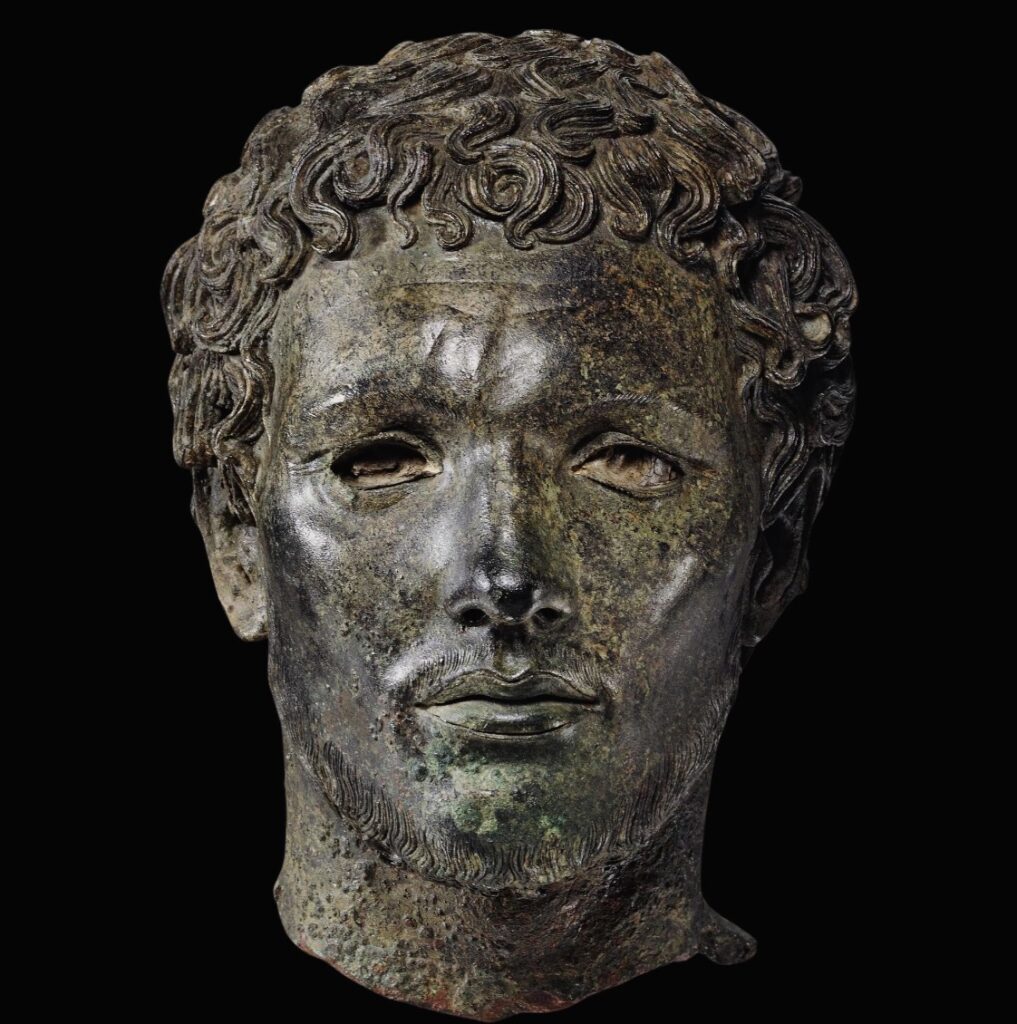With that troubled brow, sharp cat-like cheekbones, and slightly downturned eyes, this soulful portrait is most beguiling and attractive. It was excavated in 1861 near the Temple of Apollo in Cyrene (modern Libya), but most essential facts about his identity and dating continue to elude scholars.
The casting, coldwork (check out those wispy chin hairs) and dramatic inlays are first rate. Only traces of the white enamel inlays of the eyes survive and none of the copper eyelashes that once surrounded them. But the lips are a triumph – also inset in copper and once with bone teeth within – and would have had a rosy sheen that contrasted with the surrounding bronze ‘skin’.

Largely because of where he was found and because of his striking facial features, he has largely been typecast as a Berber. His identity has caused certain scholarly consternation since that discovery, with the 19th century excavators supposing the head might have belonged to a monument honoring a victorious charioteer, as it was found with intriguing burnt fragments of a bronze horse and bits of gold leaf. There are also compelling reasons to identify him as a 2nd century B.C. regional ruler.
Even the century in which he was created is a matter of debate. In the twentieth century the 4th century B.C. was a dominant view, with some of the great sculptors’ names bandied about (including Lysistratos). Saner minds have more recently prevailed, leaving a prudent two century range within which to play. Do seek him out at the British Museum, and gaze into those sightless eyes…




